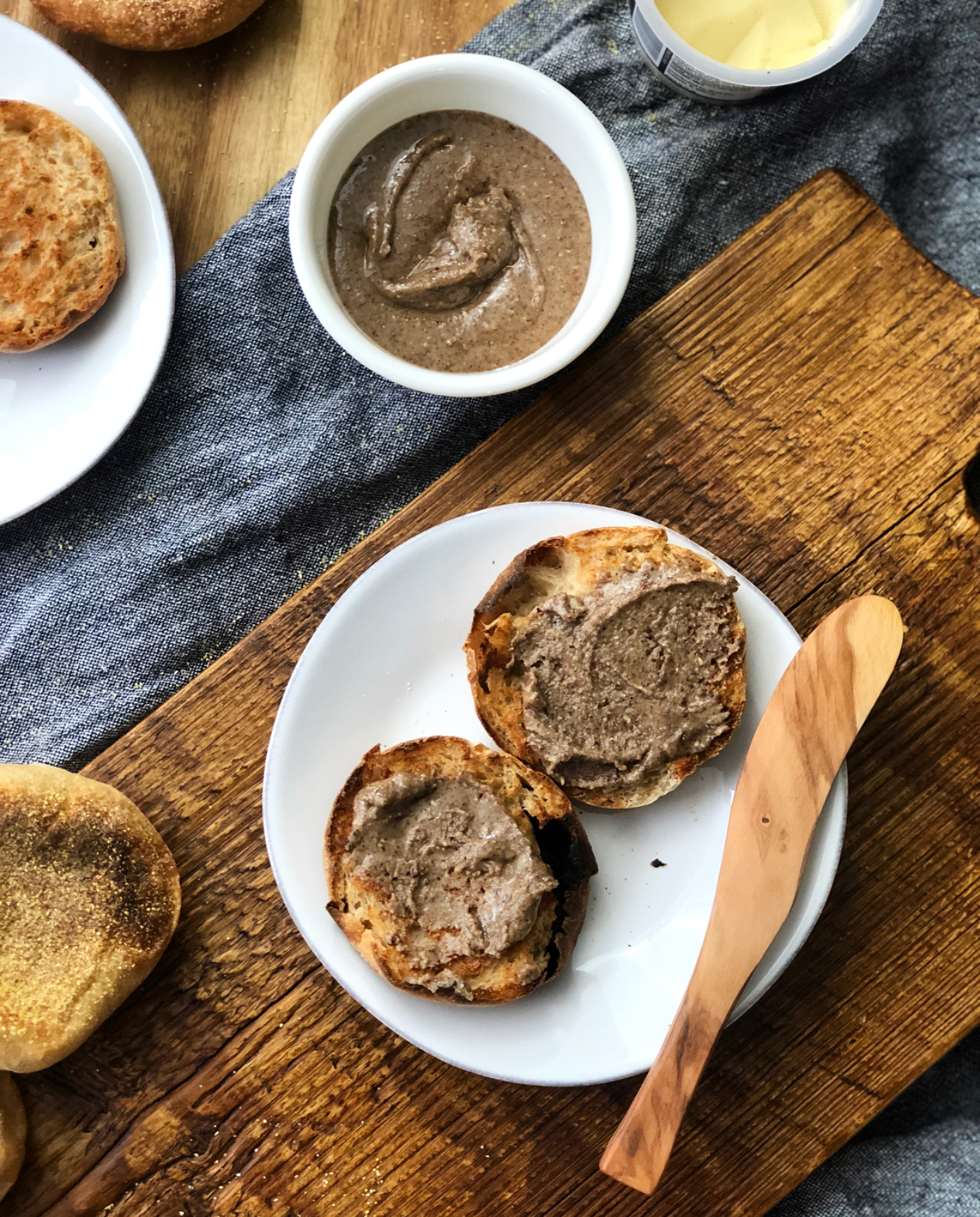Wheat(ish) English Muffins
English muffins are really something special. They're not quite bread, but they're not quite biscuits and despite their name, they really can't be considered muffins. Perhaps the most lovable trait of these unique beauties is their signature cragginess. Splitting them open with a fork brings out this uneven texture even more, making the perfect holes for peanut butter, honey or jelly and adding an ideal level of crunch.
This recipe was adapted from America's Test Kitchen's Bread Illustrated book, which is just an all-around banger of a book. Their recipe had no wheat or bread flour, but I decided to add a slightly wheaty twist to my muffins. It's a very subtle difference, but the wheat adds a little bit of nuttiness that is just to die for.
Let me know what you think of the recipe in the comments and don't forget to follow the sustainability tips below!
Time: 17-29 hours
Makes: 12 English muffins
Ingredients
3/4 cup whole wheat flour
1 cup all-purpose flour
3/4 cup bread flour
1 tablespoon instant or rapid rise yeast
2 teaspoons salt
1 cup warm whole milk
1/2 cup warm water
2 tablespoons unsalted butter, melted
1 tablespoon honey or maple syrup
5 tablespoons yellow cornmeal
Equipment
Stand mixer with dough hook attachment
2 large rimmed baking sheets
Steps
Whisk together flours, salt and yeast in the bowl of a stand mixer with a dough hook attachment (I don't recommend kneading this recipe by hand - it's just too dang sticky). In a separate bowl or large liquid measuring cup, whisk together water, milk, melted butter and honey or syrup until the honey or syrup has dissolved.
Start the mixer on low speed while slowly pouring in the milk mixture. Knead until incorporated, about 2 minutes. After all the liquid is absorbed, turn the mixer up to medium speed and knead for about 9 minutes, or until the dough starts to form a mass and pull away from the sides. The dough should be very sticky. Transfer dough to a large lightly oiled bowl, cover with a tea towel and let rise for 30 minutes.
After the first rise, use your fingertips to fold the edge of the dough over itself toward the center. Rotate the bowl 45 degrees and fold the edge toward the center again. Repeat rotating and folding 6 more times, so that all edges of the dough have been folded in. Cover the dough with a tea towel, put in a warm place and let rise for 30 minutes, or until doubled in size.
Prepare one large rimmed baking sheet by sprinkling it with half of the cornmeal. Punch down on dough to deflate and transfer to a well-floured countertop. Divide dough in half, then each half in half, and then each quarter into thirds (for a total of 12 pieces of dough). Shape each piece of dough into a ball by tucking its sides toward its bottom and pinching at its base. Then, place the ball seam-side down on a clean counter and use a cupped hand to drag the ball in small circles until taught and round.
Transfer dough balls to the prepared sheet, leaving about two inches of space between each one. Cover loosely with a lightly greased silicon baking sheet or compostable parchment paper and gently place the other sheet pan on top. This will give the muffins their characteristic flatness. Let the dough balls rest for 30 minutes and then refrigerate for 12 to 24 hours.
Remove the upper sheet pan and gently loosen the silicone baking sheet or parchment paper. Let the muffins sit at room temperature, lightly covered with the silicone or parchment, for 1 hour.
Heat oven to 350 F and sprinkle the tops of the muffins with the remaining cornmeal. Heat a 12-inch skillet over medium heat. Once the pan is hot, transfer a couple dough balls to the skillet and cook until puffy (be careful not to deflate them) and browned. This will take several minutes per side. Transfer the browned muffins to a baking sheet and bake for about 10 minutes, or until their internal temperature reaches 205 degrees. Repeat browning and baking with remaining dough balls.
Let the muffins cool for about 15-20 minutes before toasting to serve and slathering with your topping of choice.
Sustainability Tips
Flours: King Arthur is my absolute favorite brand of flour because they are a B Corp, which means they need to meet super strict environmental and social standards.
Dairy: Milk are butter are generally pretty bad for the environment because they come from cows, who emit a bunch of greenhouse gases (the things that are causing climate change) and destroy natural landscapes. To lessen the environmental impact of my dairy, I buy dairy from B Corps like Stonyfield, Vermont Creamery or Clover Sonoma because they are held to super high environmental and social standards.
Honey or Maple: Buying your honey or maple from a local provider is the best way to be more connected to your food. If you buy locally, you can ask the provider any questions you have about producing honey or syrup, and your sweetener won’t emit as many climate-changing greenhouse gases during travel.
Silicone baking sheet: The original recipe called for covering the muffins with lightly greased plastic wrap, but plastic is super unsustainable for so many millions of reason. To avoid this wasteful plastic use, I opted to cover my muffins with a lightly greased silicone baking sheet and it worked just as well.



